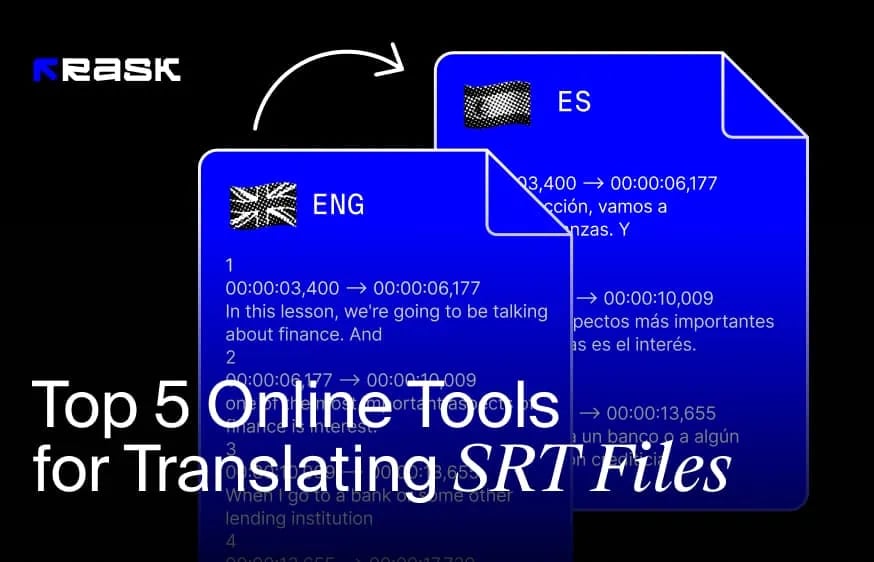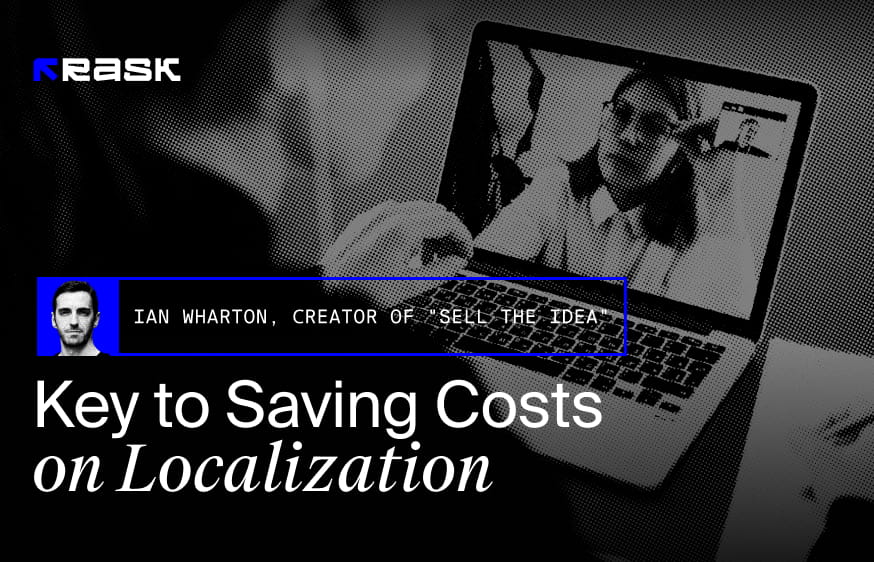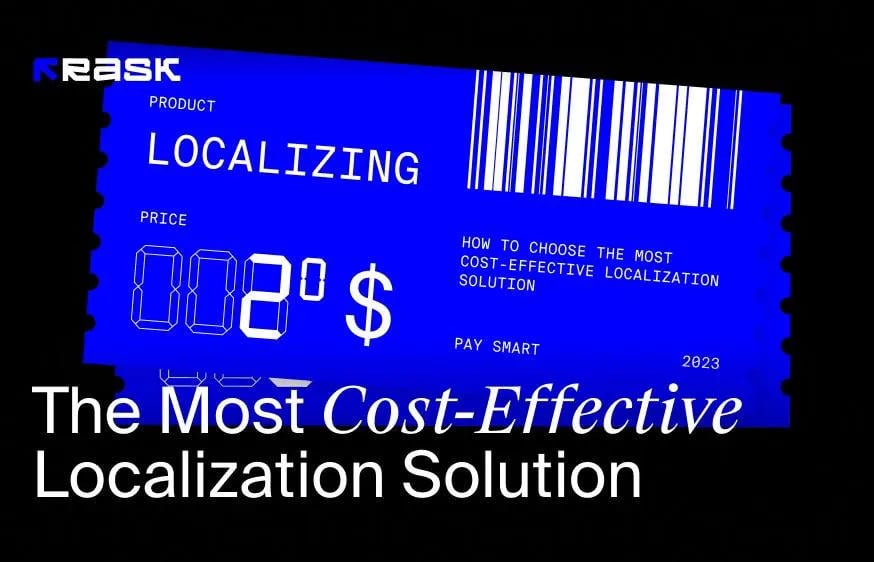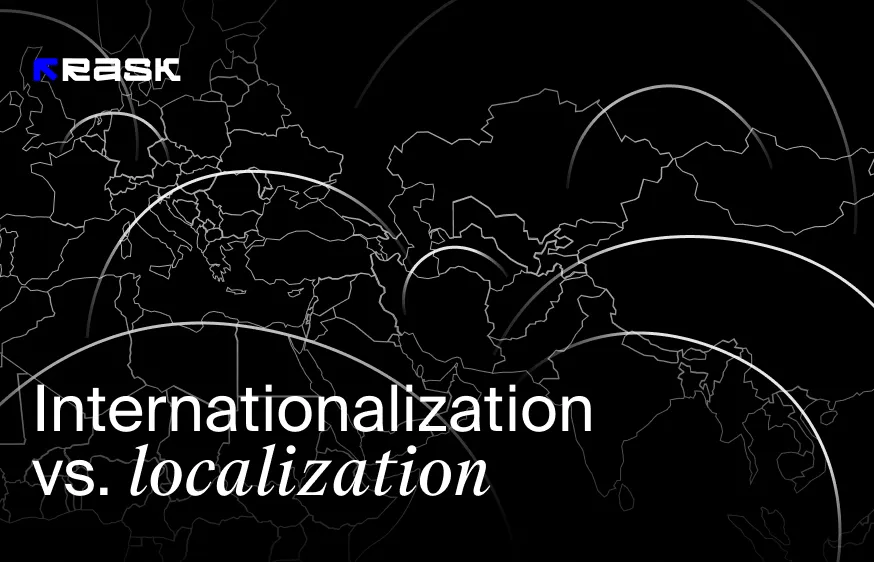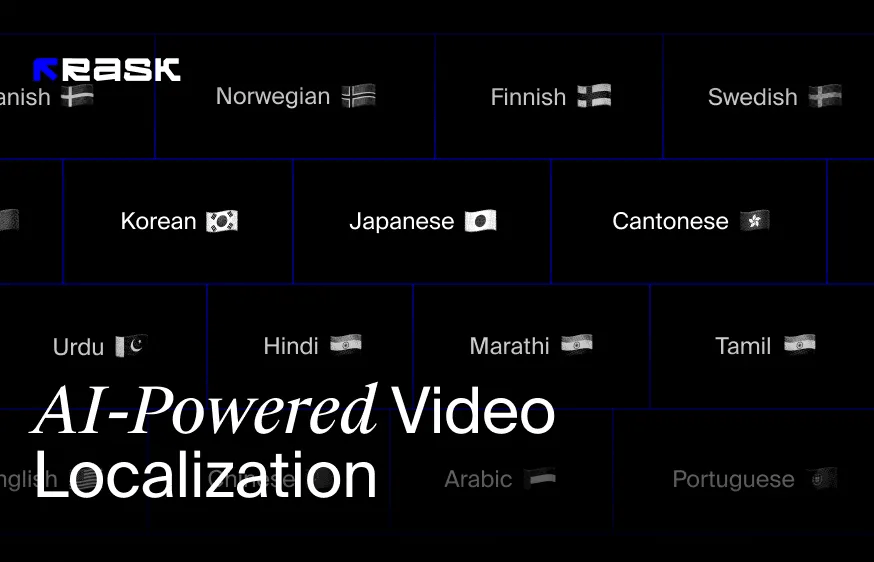One great thing about E-commerce business is that you can sell your products to a global market. Regardless of how far the new markets are from your main headquarters, E-commerce localizations can still be realized.
Although localization software makes the process easier and faster, it isn't as simple as it may look. International customers usually fall at the first hurdle. If your website is generic with your local prices and website copy available only in English - your chances of success are pretty low. Why?
Personalization. Yes, personalization is what drives international sales when it comes to localization and E-commerce stores. Most people prefer to see e-commerce websites with content available in their native language, with relevant prices in needed currencies, and websites that cover cultural nuances.
That is what localization means. You want to make the website as personalized as possible, so it covers all differences your new target audience may have. And in that guide, you will learn how to organize the process so it doesn't feel so overwhelming and costly.
Let's Start with What is E-commerce Localization?
E-commerce localization is the process of taking an online store's content and adapting it to a different market.
Let's say you have an e-commerce website that sells products only to UK target customers. Now you want to ship products to the USA and Spain. While you can just provide new options in terms of shipping, localization will bring x5 sales.
As a result, you will need to adapt your store to both Spanish and American markets. This includes translating the content to dialects and languages, implementing new currencies, and making the overall website suitable for new audiences.
Why is E-commerce Localization Important?
As we said, you can just say that now you shop in new markets. But in 99% of cases, it won't change the picture of you and, therefore, won't lead to increased sales. How will your new customers know what you ship to the new market? How will they understand your local currencies and language? And if they handle both these questions, they still would want personalization, so the chances they leave your e-commerce website are high.
So why is Ecommerce localization so important?
Beat the Competition
Based on the study performed by CSA Research, 75% of customers want to use websites in their native language. The same source reports that 92.2% of potential customers want to make purchases in their own currency.
So if you want to globalize your business and open up new revenue streams, E-commerce localization would be a must-have. The statistics from the study we provided above also indicate that customers support brands that cater to their needs. When not investing in Ecommerce localization, you will lose out to the local competitors.
Reach a Wider Market
The US income from E-commerce websites in 2017 was $449.88 billion. Compete to the income of China the same year - $877.00 billion for the same year. You won't be surprised to know that expanding your store to international markets has lots of benefits. But it also requires using proper Ecommerce localization strategies to achieve results.
7 Benefits of E-commerce Localization
Increase Customer Loyalty
Online shoppers like a global E-commerce site that is made in their native languages. Personalizing the content and overall customer experience shows your customers that you care. This, in turn, grows customer loyalty.
Grow Market Share and Revenue
E-commerce localization means tailoring a language, content, UI elements, and products to a specific target audience. This allows your brand to establish strong ties with your international customers. As you present your products to international markets also means you increase revenue.
Scale the Company
You may know that traditional brick-and-mortar E-commerce stores take years to scale and expand in a new market. But localization allows us to achieve this in months. Let’s take as an example Mensa, an Indian D2C startup. It was able to reach unicorn status in just six months last year thanks to Ecommerce localization.
Benefit from Region-Specific Opportunities
Regardless of where your brand locates, you can start reaping benefits from local holiday opportunities. For instance, if you run an E-commerce store in the US and decide to localize your store in Spain, you will be able to create seasonal and profitable campaigns for its popular holidays.
Reduce the Consumer Buying Cycle
If your potential customer is looking for a specific product and finds your localized site, the chances they purchase from you are pretty high. The lack of language and cultural differences reduces any friction that may appear in the process, speeding up the buying cycle.
Improve SEO
Multilingual SEO (also known as search engine optimization) is a crucial element of improving search presence once you localize your E-commerce store. Localization guarantees that potential clients will be able to find your store using organic search, entering search phrases in their native language. Thus, you will also have higher positions in relevant search engines.
Consumer Behavior Data
E-commerce store localization brings in more potential clients from your target region. The process lets you collect a huge amount of region-specific data, including buying patterns, demographics, and purchasing preferences. Using this data enables data-driven decisions, which will help you attract more online shoppers.
Elements of Successful E-commerce Localization for a New Target Audience
Learn Target Audience’s Preferences
Each locale comes with its own E-commerce landscape and the needs of consumers. Locale refers to the setting of parameters defining the user’s language, country, and specific preferences. That is why it is essential to stay aware of any nuances that your new target audience may have so you can tailor your E-commerce online shopping accordingly.
The following questions here may be helpful:
- What payment methods are popular?
- Do your new potential clients have access to rapid shipping and logistics options?
- What are the existing regulations in the E-commerce industry in that locale?
Perform the UX Audit
Ease of use and website familiarity aren’t universal features. That is why you should ensure you develop a relevant design for local markets, including imagery, color schemes, user journeys, and all other UX elements of your Ecommerce store.
UX Ecommerce localization plays the same role as content translation in the E-commerce process. It allows your brand to deliver outstanding e-commerce customer experiences. Cultural differences covered, regional norms, user expectations, and language are some of the main factors that will eventually affect how your potential customers perceive your brand and products. Localizing the UX accordingly helps to achieve needed goals.
Price Localization
Although you know your approximate local prices, the same products can cost more or less in other countries - and that’s something you have to consider in order for E-commerce localization to work.
Whether you just convert prices from one currency to another or adjust prices accordingly to the new locale and their salaries, make sure you consider factors like taxes, shipping costs, and others. Your price should be competitive in each local market.
Locally Relevant Information
E-commerce customers always expect to find information relevant to their market. For example, it relates to product specifications, availability in their country, and reviews.
If you have specific products that are available only in one market, you should let internet users know or simply not put these products on an E-commerce site in that area.
Multilingual Customer Support
The level of E-commerce support is crucial. And it becomes even more critical when we talk about placing your store in other countries - how will your potential clients resolve issues they may have? Do you offer support in their own language?
While you can use ChatGPT or any other type of bot that will be responsible for support, being able to speak with a real person and knowing the same language makes customers feel safer and grow their loyalty.
Locale-Tailored Marketing
You can't localize an Ecommerce site but forget about marketing. Each country has its marketing campaigns that work the best based on customers' buying preferences. That is why all your promotional material should match the cultural, linguistic, as well as tech expectations of the new target market.
Grow Trust at the Local Level
When trying to beat the competitors, you will need to grow trust in a new market. Local customers often consider new online businesses entering the country confusing and surprising as well. It is best to fall under the second category so Ecommerce customers think it is worth trying your products. But that is also not enough.
It is crucial for you to either partner with influencers or collaborate with industry associations, so your brand can appear at events or social media accounts to build trust.
Customer Engagement
Just selling products isn't always enough. That is why you should always ensure you continue to appear in your customer's inbox or social media accounts so you optimize their post-purchase customer experience. Following a proper, culturally appropriate tone will help you grow retention rates and show you care about their satisfaction.
Adapt Sales to Local Dynamics
As an E-commerce business owner, you probably know that sales channels may greatly vary in different countries and global markets. For instance, in Argentina, customers most often buy products via Facebook and WhatsApp apps. That is why it is crucial for you to offer relevant sales channels to not confuse your potential customers and convert them into clients faster and easier. This will help you reach high global Ecommerce sales.
Best Practices of E-commerce Localization for a Target Market
Knowing elements of E-commerce localization is great. Yet, it is always best to follow practice-proven recommendations and a few best practices in the field that can help you succeed.
Conduct Market Research
You should always start the localization process with market research. It involves the following:
- What is the target language the new target market speaks?
- Buying patterns and their salary?
- Current competitors?
- What competitors have that you don't?
- What mistakes competitors have you can avoid?
- Main paint points of your new audience?
- How can your product resolve it?
- What holidays does the new locale have?
Prioritize Content According to Business Goals
As you plan the localization strategy, we recommend you go with a strategic approach. This means focusing on content that has been proven to generate the most ROI for your e-commerce investments.
This may include high-visibility product descriptions, email marketing campaigns as well as blog content that will potentially rank highly in search engines like Google. You can also use ChatGPT or other tools to generate less viral content - deciding what works for your online business best when exploring the results.
Invest in Multilingual SEO
As we already mentioned, having an immersive store with the best prices will mean nothing if potential clients can't find the site in their native language. That is why you should guarantee you reach out to as many potential customers as you can, investing in multilingual SEO.
Localize Shopping Cart
You should also ensure a checkout page and a cart appeal easily and understandable for international customers. That is why you should localize them and display the relevant currencies. Don't forget to implement locally popular payment methods, as well as relevant shipping and tax rates according to each customer’s locale.
Date and Time Formats
Even most experienced E-commerce stores can forget about date and time formats. But these standards make a lot of sense to international customers. For instance, the date precedes the mouth when you write out a date in most European countries. It looks like this: “4 August, ” while “August 4” is how the dates are written in the US and Canada.
Comply with Local Regulations
One of the key issues you may face with localization is staying compliant with the different regulations and laws of each country. What are the local data protection rules? Are you required to collect taxes? If yes, what is the rate for this specific locale? What shipping costs are okay for them?
Although this should be explored at the first stage of the localization (research), you can always invest more time to explore regulations as it may either make the process smooth or damage your online reputation if done incorrectly.
Provide Time-Relevant Customer Support
We already discussed the importance of providing customer support in the target audience's local language. But this point goes beyond that: you will also need to consider different factions of time-relevant support. These include time zone differences, busier periods, as well as local holidays. Tailoring your customer support shows international Ecommerce users that you know their country and rules and that you care - personalizing the customer experience.
Don't Forget About Social Media
We live in a world where social media plays a huge role in the lives of modern people. So it isn't surprising that localization also involves social media posts. However, it is best to choose social media platforms that are popular in the specific locale, so you want to waste money on platforms that aren't even used in a specific country.
How to Localize Your E-commerce Store for International Customers?
Step 1: Translate your e-commerce website
Okay, we are finally here. The first step to take in your localization process will be translating your Ecommerce website content. While you can always hire translation specialists and use localization services, the easiest and fastest way to achieve the best results is to use translation software. When it comes to video content translation, you can always use Rask AI, powered by AI that offers accurate translation into over 130 languages.
When you need to translate text content, we recommend searching for localization services with the relevant online shopping experience in your field or software tools that use advanced neural machine translation. This technology uses advanced algorithms that “learn” about the new language and translate it, meaning it is constantly learning the most natural and accurate way to translate the content.
Step 2: Localize Your Checkout Experience
Localizing a checkout and a card has the same importance as store translation. The checkout is the last page that can either lead E-commerce businesses to success or make your customers leave your store and never get back to it. And the second option happens when you don't have a fully localized website and a checkout experience.
This happens because they can't understand what to do to finally get their products shipped to their door. They may also feel confused, but the checkout page should be as smooth as possible.
Form Field Localization
The form field varies from country to country. And creating these address forms properly will help you achieve the best results with your Ecommerce localization efforts.
Let’s say you run a US-based Ecommerce store and want to expand to the UK market. That is where you need to provide forms that UK residents can fill out. Phone numbers in the US have the following format: xxx-xxx-xxxx. The UK phone format is xxx-xxxx-xxxx.
In addition, each country handles its addresses differently. Let’s explore just one example - in Japan, streets don’t have names since cities are organized into blocks. Most of the leading Ecommerce sites will automatically switch the address form at checkout so they match the specific country.
Step 3: Localize a Brand Image and Marketing Materials
The last step is to ensure your E-commerce brand image and marketing materials are tailored specifically to your audience and what they like. This will help you to organize proper brand messaging for different platforms.
For example, some countries prefer video content, so you will need to use AI tools like Rask AI for video content creation in a local language.
There are some things to focus on here:
Visuals: Leading E-commerce stores heavily rely on quality visuals. Staying neutral won't bring success to your brand. Although it won't lead to major mistakes that ruin your business, it is still worth checking whether the images you choose are relevant to different regions.
Sales trends and holidays: As we mentioned above, public holidays can be a great opportunity for you. However, they are different in different countries. Soi, when you create promotion materials and campaigns, make sure they all stay relevant to the local market and their specific holidays so you open up new local holiday revenue streams.
Values: Learning the value of your new target market will take some time. But as we see the trends in the E-commerce local domain, people tend to focus on and support brands offering sustainable and ecological products and shipping options. That is why you should consider how you will bring this value to your audience.
Wrapping Up | Localization
Localizing an eCommerce store is now more critical than ever. We live in a highly digital world where people have numerous options to choose from, so standing out with your brand is a must-have. That is where localization comes into the picture.
While it can be speeded up with software tools like Rask AI, it is still a vast and continual process that involves comprehensive insight into foreign markets, cultural nuances, and cutting-edge technology.
FAQ
E-commerce localization refers to the process of adapting the store to a new locale for business international expansion. This process involves several parts, including content translation, marketing campaign optimization, offering relevant payment methods, translating product descriptions and adaptation of UX elements.
E-commerce localization is now a must-have for any e-commerce store looking for new target markets. It is a key element in delivering outstanding e-commerce experiences since it covers all parts of a site adaptation to a new locale.
Localization in business means making your products/services available to new countries. In contrast to just expanding the shipping options, localization makes products/services familiar to a new target audience by translating and adapting the entire Ecommerce website and marketing campaigns.
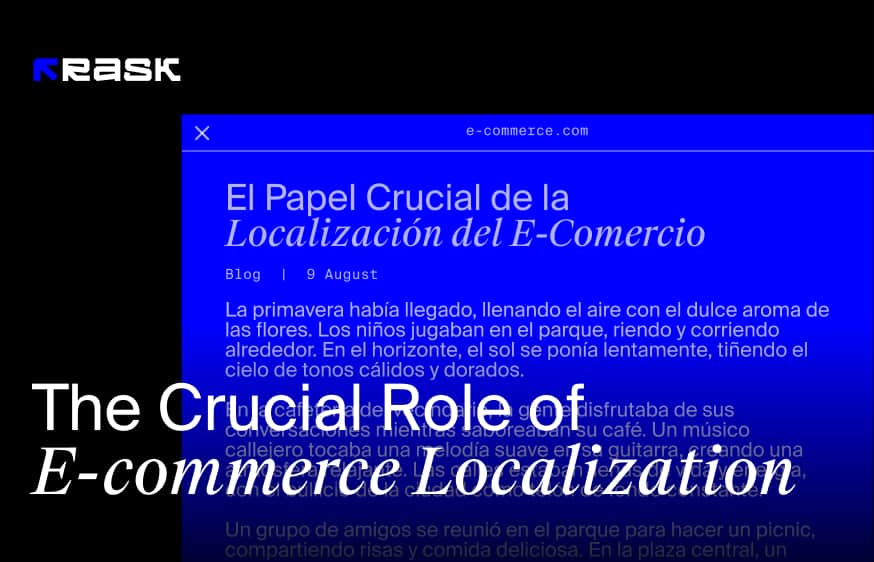



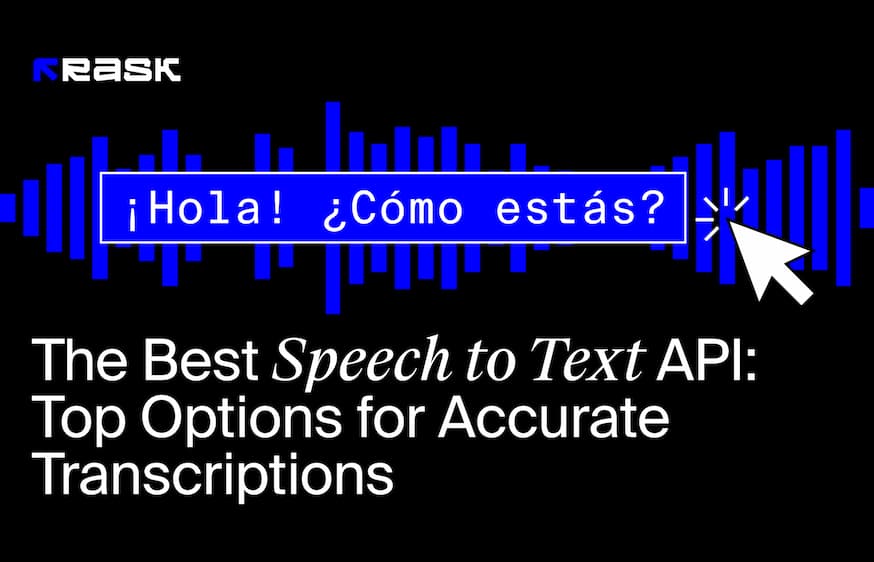
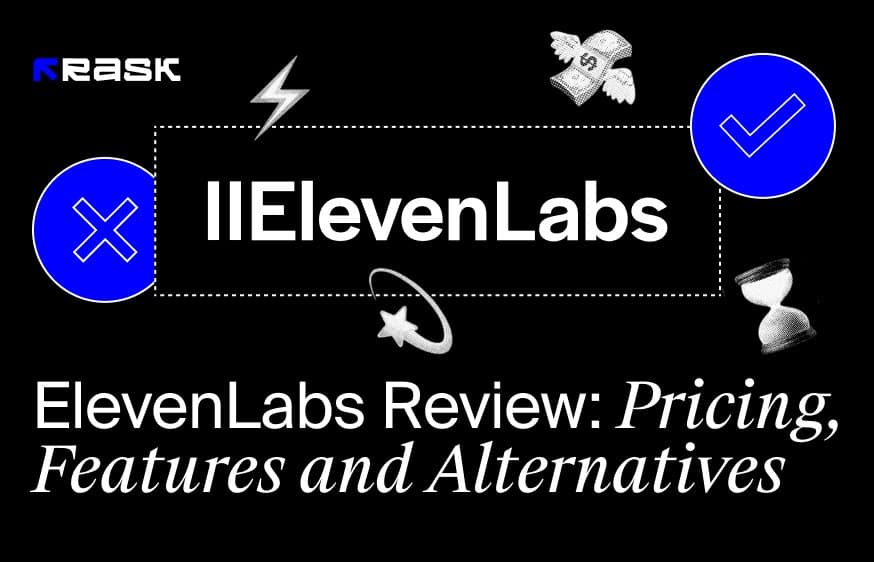
.jpg)
.webp)




![8 Best Video Translator App for Content Creators [of 2024]](https://rask.ai/cdn-cgi/image/width=960,format=auto,fit=scale-down/https://cdn.prod.website-files.com/63d41bc99674c403e4a7cef7/6668a3dcd3175bd1d1c73c81_Best%20video%20translator%20apps%20cover.webp)
![Best AI Dubbing Software for Video Localization [of 2024]](https://rask.ai/cdn-cgi/image/width=960,format=auto,fit=scale-down/https://cdn.prod.website-files.com/63d41bc99674c403e4a7cef7/66685014f68137eb05c89c16_Cover.webp)



